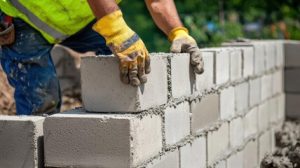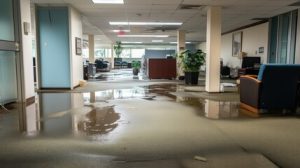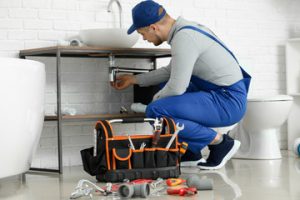Landscaping is the process of making improvements to a property’s outdoor environment. This can include everything from lawn areas and flower gardens to retaining walls, water features, and walkways.

Contrasting shapes, textures and sizes can help to create visual interest in a landscape. Using unique plants, distinct structures and garden ornaments can also draw attention to an area. Visit https://oceaniclandscaping.com/ to learn more.
Landscaping is a creative, science-based field that involves the modification of an outdoor space through plant selection, placement and design. It incorporates elements such as retaining walls, water features, paving materials and outdoor living spaces to create an aesthetically pleasing environment that’s functional and enjoyable for homeowners and visitors. Humans have tamed and landscaped the natural world since ancient times.
Today’s consumers are becoming more environmentally conscious and are seeking sustainable landscaping services that reduce environmental impact. These landscaping practices can include the use of drought-resistant plants, water conservation techniques and other green building methods. Landscapers can also help with the maintenance of wetlands and other natural areas, which are important to local eco-systems.
In addition to residential and commercial clients, landscapers can be engaged by utility companies to maintain their infrastructure. Keeping trees and other vegetation clear of power lines is essential for safe and reliable service. In addition, the industry is a source of summer employment for students and others looking for part-time work.
Creating a strong online presence for your landscaping business is vital in today’s digital age. This includes a responsive website with high-quality photos and videos that showcase your work. You should also be active on social media to share updates, promote new content and engage with your audience.
The key to growing your business is a well-planned marketing strategy that encompasses all aspects of your brand. Start by researching your demographic and understanding the needs of your local market. Then, develop detailed customer personas to understand their pain points and buying habits.
Once you have a clear idea of what your target market wants, create consistent messaging and visuals across all channels. This will ensure that your message is heard, understood and acted on. In addition to your website, consider social media, blog posts and video content to drive traffic to your landscaping website. You can also promote your content through email newsletters, leveraging a mix of content formats to reach the right audiences.
Form
Form refers to the shape of landscape elements. Whether they are sculptural forms like the spiky silhouette of a yucca or delicately trimmed topiaries that mimic the contours of whimsical animals, form provides an aesthetic dimension that can make a landscape feel alive and inviting. Form is important in creating visual focal points and for defining movement through the landscape. It is also used to complement the architectural style of the home and establishes the overall mood of the landscape.
Form works in conjunction with line to define movement and create a sense of balance and harmony within the landscape. Form can be straight or curved and may be created by using hardscape materials, such as walkways and paths, or planting beds, retaining walls and sod lines.
A key element in form is evoking emotion through the use of shapes and textures. Forms are also used to add a formal or informal feeling to the garden and can be shaped by planting symmetrically or asymmetrically, by placing features like urns in the landscape or by selecting particular plants that are noted for their dramatic forms.
The surface quality of plants and hardscape materials is referred to as texture. A landscape with a variety of textures, from fine to coarse, adds interest and depth. The juxtaposition of textures also accentuates color and draws attention. A landscape with lots of fine textures can appear soft and casual while a landscape with a lot of bold textures tends to be dramatic and formal.
Scale is the relative size of a landscape’s components, both in relation to each other and to the property as a whole. Proper scaling ensures that all the landscape elements are well balanced and visually pleasing. For example, a large tree should be proportionate in size to the house and yard. Likewise, a small plant should be placed in an area that will not overwhelm its surroundings. Empty spaces or voids in the landscape are also important, as they provide a sense of balance and unity to the space.
Maintenance
A good landscaping plan requires ongoing care to keep it looking its best. This is known as landscape maintenance and typically includes the trimming, watering, weeding, lawn care, and snow removal of outdoor spaces. It is the foundation of a well-kept home or commercial property and helps to improve curb appeal.
Landscaping involves more than just plants; it also incorporates the layout of outdoor areas, like patios and walkways. It can also include retaining walls, water features, and more. Landscaping design is a creative process that enhances a property’s natural beauty, creates outdoor living spaces, and adds value to a home or business. It can take into account factors like sunlight, drainage, and soil types to ensure that the outdoor environment thrives.
Regular landscaping maintenance is a vital aspect of any garden or yard, and it is important to maintain a balance between beauty and function. A professional gardener can help with this process by determining the right type and number of plants for an area, establishing a schedule for planting and pruning, and creating a color palette that will complement your existing outdoor space.
In addition, regular maintenance can help to detect issues before they become serious problems. For example, the emergence of pests or disease may require specific treatments, and a professional can help to address these issues before they cause significant damage. Landscape maintenance can also prevent environmental damage by reducing pollutants, contaminants, and soil erosion.
Residential landscaping is an investment in your property’s beauty and value, and it can boost your home’s resale price. However, maintaining your landscaping is a big responsibility and can be difficult to do on your own. Fortunately, there are many professional services that specialize in providing quality landscape maintenance for residential properties.
Commercial landscapes offer a wide variety of benefits, from increasing your property’s curb appeal to enhancing employee and client health. Proper landscaping can improve traffic flow, reduce dust and noise, and even increase your property’s value. In addition, a well-maintained commercial landscape can promote a positive image of your company and attract new customers.








